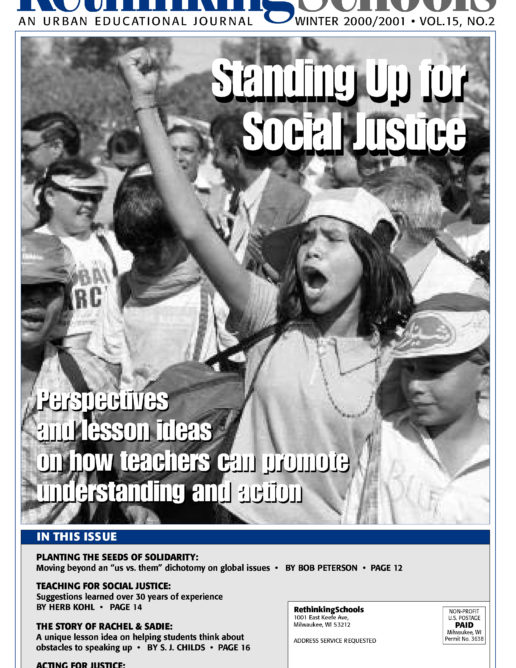Preview of Article:
The Story of Rachel and Sadie
A unique lesson on how teachers can help their students think about the obstacles to speaking up and standing together for social justice.
I borrowed this lesson from Amanda Weber-Welch at Gresham High School in Oregon who borrowed it from Carol Kilpatrick when she was at West Linn High. Weber-Welch has done the fish activity for the last two years, but this is my first time.
To set the tone, I tell the kids that I am fed up with their behavior (I act frustrated with them for a couple of days beforehand). I lecture that they need practice in discipline. I act tough. I stay tough.
On the day of the lesson, I begin by telling them that for the next 10 minutes they must sit silently at their desks, looking straight ahead, hands folded neatly. If anyone makes a move or a sound, they get detention or a referral.
Then, casually, I scoop the fish out of the bowl and onto a table in front of the kids. I wait. I have been told that the fish can live for at least five minutes out of water. I don’t want to risk more than two or three minutes. As kids move or shout I write down their names and warn them again.
Eventually, either a kid saves the fish or I put it back. Then comes the discussion. I start with, “Why did we just go through that? What am I trying to teach here?” At first some kids think it is about discipline, but they catch on quickly.</p

